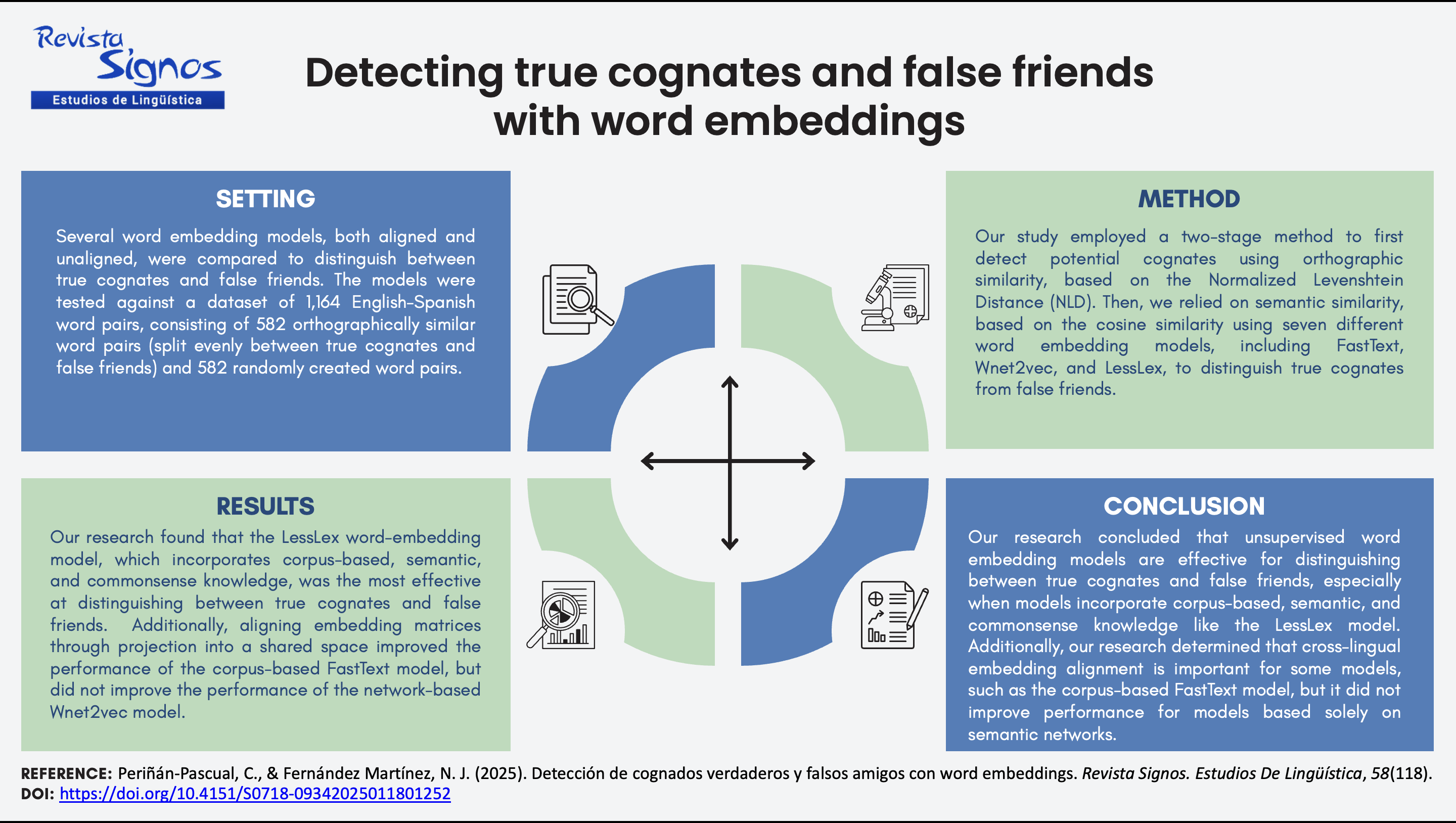Detección de cognados verdaderos y false friends con word embeddings
DOI:
https://doi.org/10.4151/S0718-09342025011801252Abstract
Los cognados son palabras ortográficamente similares en distintas lenguas que tienen la misma etimología. La investigación de cognados es muy útil en lingüística histórica, adquisición de lenguas, recuperación de información y traducción automática, entre otras muchas áreas de investigación. En este contexto, la identificación de false friends supone un reto para los métodos automáticos de detección de cognados, ya que la similitud ortográfica no es suficiente para detectar estos pares de palabras. Con este fin, evaluamos siete modelos vectoriales-espaciales no supervisados diferentes basados en redes neuronales para detectar cognados en general y distinguir los cognados verdaderos de los false friends en particular a partir de una lista de pares de palabras en inglés y español. Esta variedad de modelos sirvió para determinar el impacto de varios factores en la calidad de los resultados y la eficacia de los modelos: los recursos lingüísticos empleados en la construcción del modelo (por ejemplo, corpus de textos, redes asociativas léxicas o ambos), la alineación interlingüística de los espacios semánticos y la fusión de significados en palabras polisémicas.

Downloads
Published
How to Cite
Issue
Section
License
Copyright (c) 2025 Revista Signos. Estudios de Lingüística

This work is licensed under a Creative Commons Attribution 4.0 International License.
Copyright agreement:
Authors who have a manuscript accepted for publication in this journal agree to the following terms:
Authors will retain their copyright and grant the journal the right of first publication of their work by means of this copyright agreement document, which is subject to the Creative Commons Acknowledgment License that allows third parties to share the work provided that its author and first publication in this journal are indicated.
Authors may adopt other non-exclusive license agreements for distribution of the published version of the work (e.g., depositing it in an institutional repository or publishing it in a monographic volume) as long as the initial publication in this journal is indicated.
Authors are allowed and encouraged to disseminate their work via the internet (e.g., in institutional publications or on their website) before and during the submission process, which can lead to interesting exchanges and increase citations of the published work (read more here).


